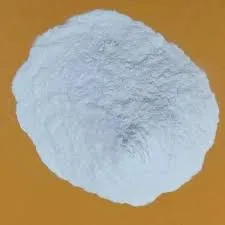
Nov . 24, 2024 04:36 Back to list
redispersible polymer powder types
Understanding Redispersible Polymer Powder Types
In the realm of construction and building materials, redispersible polymer powders (RDPs) have gained significant attention due to their versatile applications and ability to improve the performance of various formulations. These powders are derived from aqueous dispersions of polymers that have been spray-dried to produce a fine powder. When these powders are mixed with water, they redisperse to form a stable emulsion, which enhances the properties of cement-based and other construction materials. In this article, we will delve into the different types of redispersible polymer powders and their unique characteristics.
1. Vinyl Acetate-Ethylene (VAE)
One of the most commonly used types of redispersible polymer powder is based on a vinyl acetate-ethylene copolymer. VAE-based RDPs are known for their excellent adhesion properties and flexibility. They provide superior water resistance and can significantly improve the mechanical properties of dry-mix mortars, such as tile adhesives and joint compounds. Their versatility allows them to be used in various applications, from flooring to exterior wall finishes.
2. Acrylic Polymers
Acrylic-based redispersible polymer powders are another popular option in the construction industry. These powders typically offer enhanced weather resistance, UV stability, and flexibility. Acrylic RDPs are favored for exterior applications, such as in stucco and facade finishes, where they contribute to durability and longevity. They also improve the aesthetic qualities of the end product, giving a smooth finish that is often sought after in architectural designs.
3. Styrene-Acrylic Copolymers
Styrene-acrylic RDPs combine the properties of both styrene and acrylic polymers, resulting in a unique blend that offers excellent adhesion and resistance to moisture. These hybrids are particularly effective in applications where both flexibility and strength are required. They are often used in EIFS (Exterior Insulation and Finish Systems) and other insulating systems, providing enhanced thermal insulation while maintaining a strong bond to various substrates.
redispersible polymer powder types

4. Ethylene-Vinyl Chloride (EVC)
Ethylene-vinyl chloride-based redispersible polymer powders offer advantageous properties for specific niche applications, particularly in niche market segments. They are known for their high resistance to chemicals and outdoor weathering, making them suitable for industrial coatings and applications exposed to harsh environments. Although less common than the previously mentioned types, EVC RDPs play a crucial role in certain specialized formulations.
5. Polyurethane
Polyurethane RDPs are recognized for their exceptional elasticity and toughness. These powders can significantly enhance the impact resistance and longevity of the final product. They are often used in applications such as flooring, where flexibility and a robust bonding are critical to withstand heavy loads and mechanical stress.
6. Selecting the Right Type
Choosing the appropriate type of redispersible polymer powder depends on the specific requirements of the application. Factors such as adhesion strength, flexibility, water resistance, and environmental durability all play a crucial role in the selection process. It is essential to consider the end-use application and the conditions it will face to ensure optimal performance.
Conclusion
Redispersible polymer powders are indispensable in modern construction, enhancing the performance of various materials and formulations. With multiple types available, including VAE, acrylics, styrene-acrylics, EVC, and polyurethane, it is crucial for manufacturers and formulators to understand these options to tailor solutions that meet specific application needs. As the construction industry continues to evolve, the role of redispersible polymer powders will undoubtedly expand, paving the way for advancements in building material technology.
-
Versatile Hpmc Uses in Different Industries
NewsJun.19,2025
-
Redispersible Powder's Role in Enhancing Durability of Construction Products
NewsJun.19,2025
-
Hydroxyethyl Cellulose Applications Driving Green Industrial Processes
NewsJun.19,2025
-
Exploring Different Redispersible Polymer Powder
NewsJun.19,2025
-
Choosing the Right Mortar Bonding Agent
NewsJun.19,2025
-
Applications and Significance of China Hpmc in Modern Industries
NewsJun.19,2025







